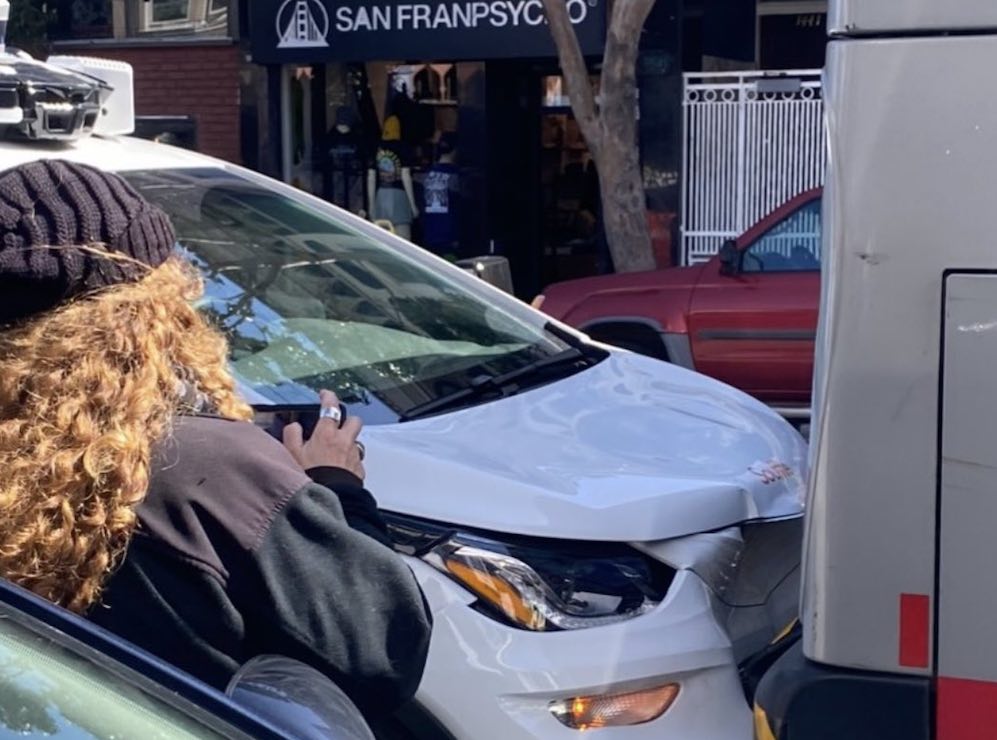|
Listen to this article  |

A Cruise robotaxi failed to brake quickly enough behind a city bus in San Francisco. | Source: Cruise
Cruise issued a voluntary recall with the National Highway Transporation Safety Administration (NHTSA) in response to a minor collision where a Cruise autonomous vehicle (AV) hit the back of a San Francisco bus. The recall affects 300 AVs.
The Cruise AV involved in the crash failed to brake quickly enough after the city bus in front of it slowed, according to the company. While the vehicle did brake, it applied the brakes too late and rear-ended the bus at about 10 MPH, Cruise said.
After the collision, Cruise began an investigation and found the cause of the crash was an error related to predicting the movement of articulated vehicles, which are vehicles with two sections connected by a flexible joint allowing them to bend in the middle, like the bus in the accident.
According to Cruise, the robotaxi saw the front section of the bus and recognized that it was an articulated vehicle that could bend, so it predicted the bus would move as connected sections with the rear section following the predicted path of the front section. As the bus pulled out, Cruise said the AV reacted based on the predicted actions of the front end of the bus, which it could no longer see, rather than the actual actions of the rear section of the bus, making it slow to brake.
Once the company found the root cause of the accident, it started working on a software update that it said would improve performance near articulated vehicles. When the update was completed, tested and validated, Cruise’s operations team rolled the change out to the fleet, just two days after the incident occurred. Results from testing indicate the specific issue that caused the accident won’t recur after the update.
“Our data and simulations showed that it was exceptionally rare. At the time of the incident, our AVs had driven over 1 million miles in fully driverless mode. We had no other collisions related to this issue, and extensive simulation showed that similar incidents were extremely unlikely to occur at all, even under very similar conditions,” Cruise founder and CEO Kyle Vogt wrote in a blog. “The collision occurred due to a unique combination of specific parameters such as the specific position of the vehicles when the AV approached the bus (with both sections of the bus visible initially, and then only one section), the AV’s speed, and the timing of the bus’s deceleration (within only a few seconds of the front section becoming occluded).
“We will undoubtedly continue to discover ways in which we can improve, even if that involves changing software that is currently deployed in the field,” he continued. “We think any potential improvement to roadway safety is worthwhile, and we will approach it with the same level of rigor as we’ve demonstrated here. These continuous improvements are likely to make voluntary recalls commonplace. We believe this is one of the great benefits of autonomous vehicles compared to human drivers; our entire fleet of AVs is able to rapidly improve, and we are able to carefully monitor that progress over time.”
Credit: Source link


Comments are closed.